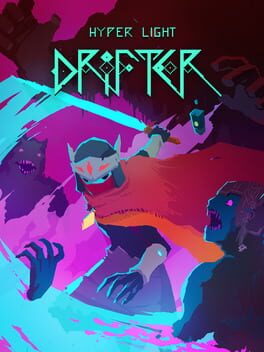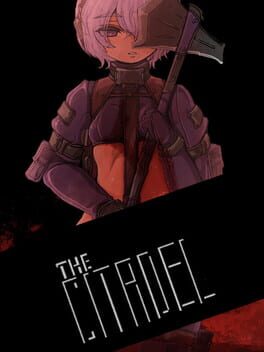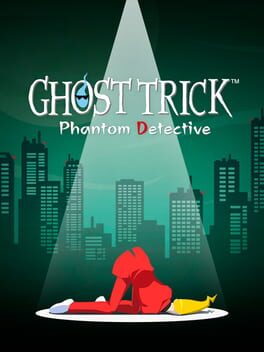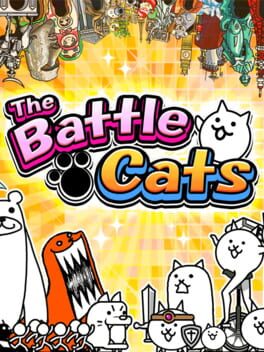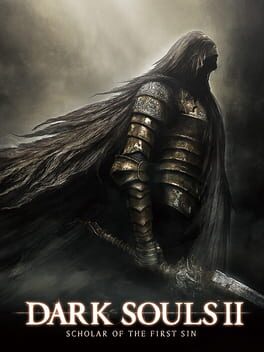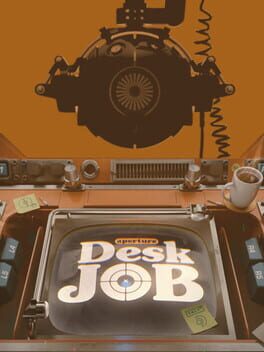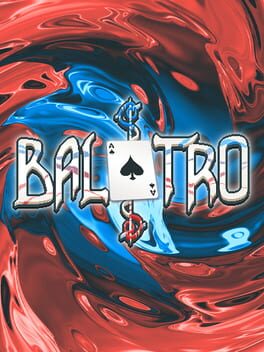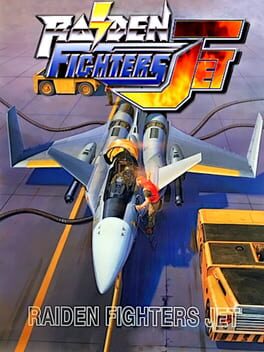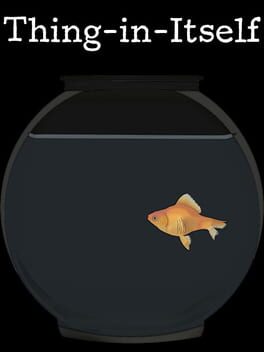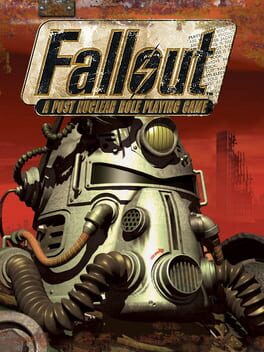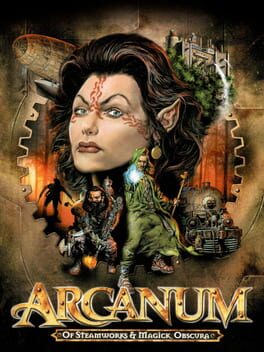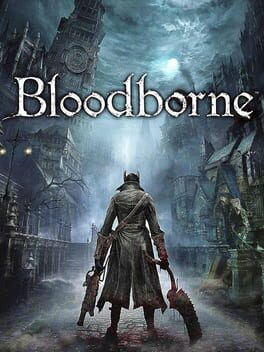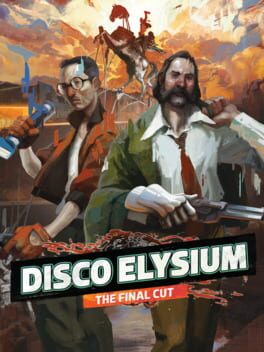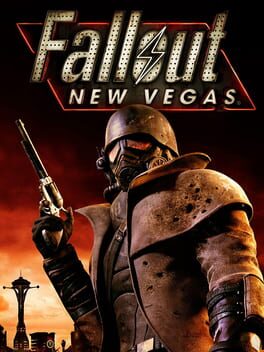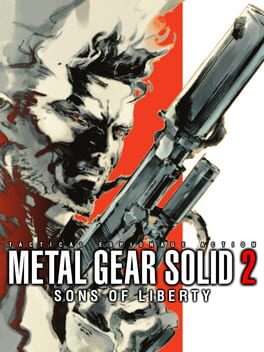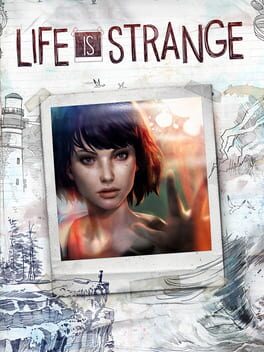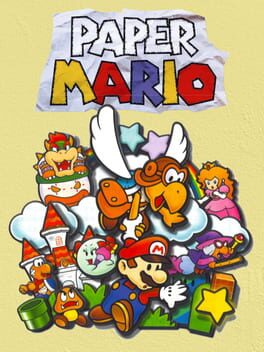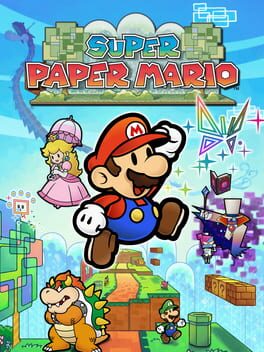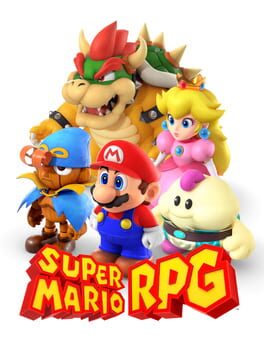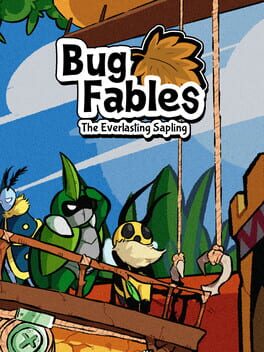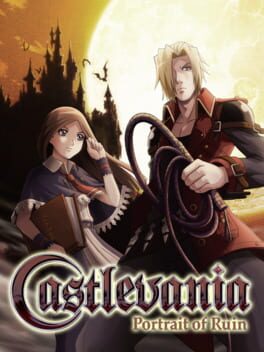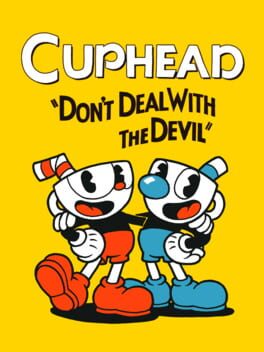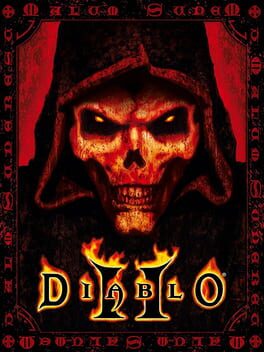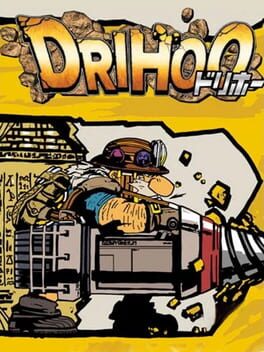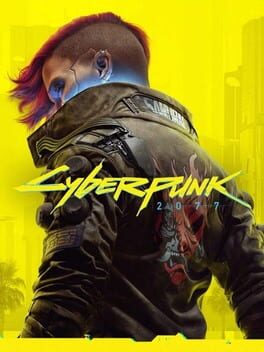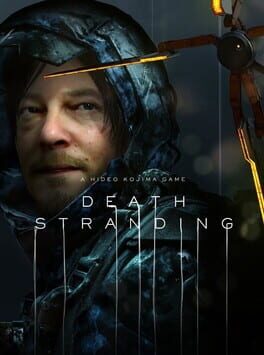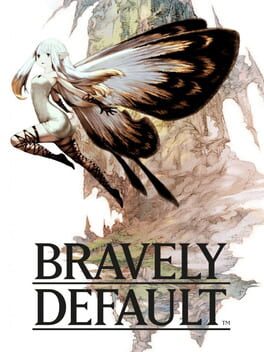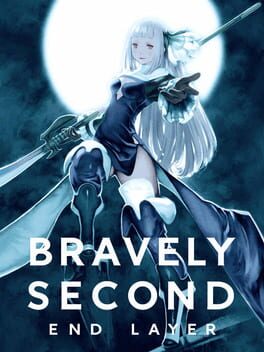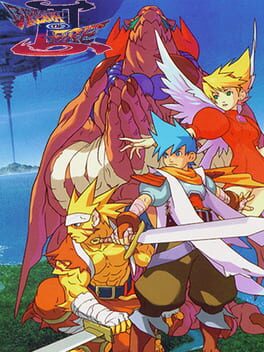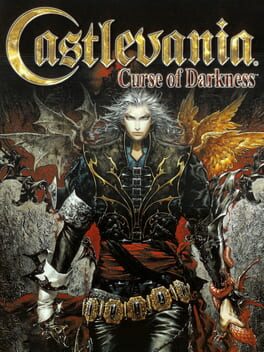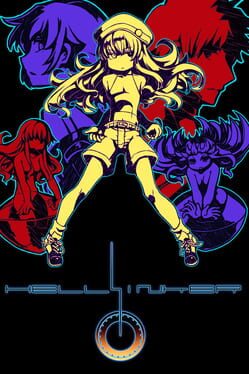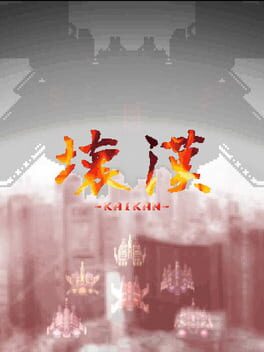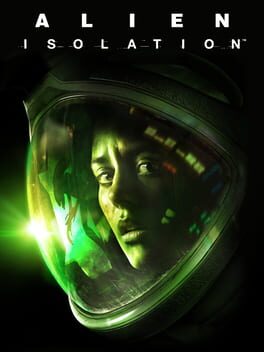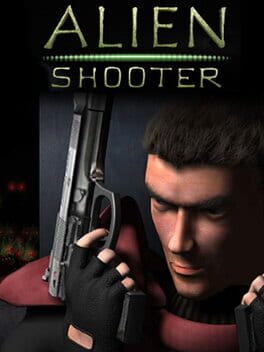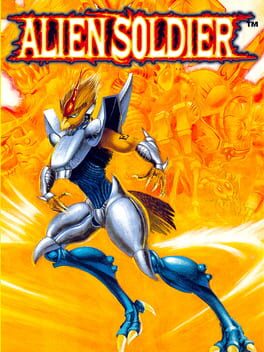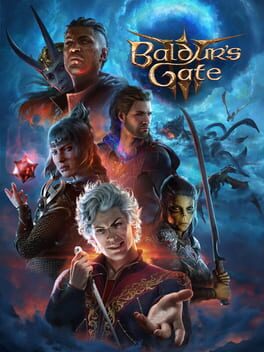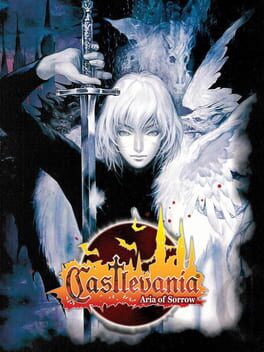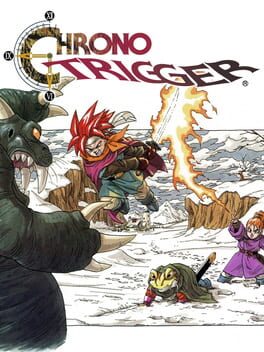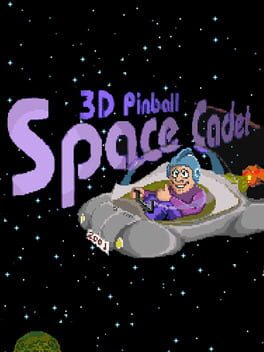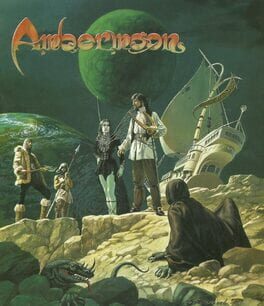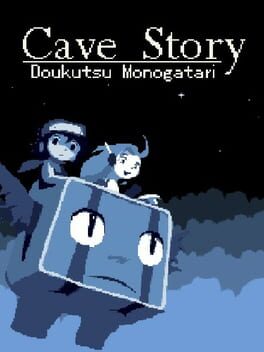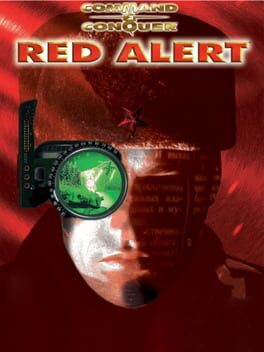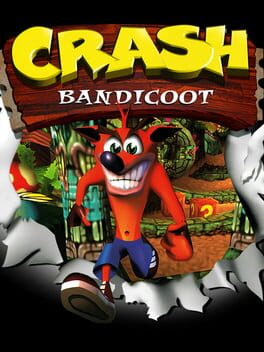665 reviews liked by canti
Hyper Light Drifter
2016
Years have passed since I’ve played my beloved Hyper Light Drifter. I wanna say I played this in 2016(?), a shrimple 14 year old girl who only knew it from a 20 second twitter clip that was rlly emotionally evocative. Didn’t know one thing about the gameplay, went fuck it we ball mode and played it. It was, back then, one of my favorite games ever, and over the years I began to doubt that. It’s no-dialogue story gimmick, good music, and catchy title were the only bits that stuck with me as years passed. I thought I’d been duped a bit emotionally by some easily marketable ideas, and that I wss some kinda ‘cool games poser’.
Do you know how happy I am to report that I was right in this case? I’ve been right a lot in this way recently- replaying Soul Hackers and Bastion lately showed me that I actually underrated or didn’t fully grasp how good some of these games were, and I’m really glad I hissed away my initial urge to avoid childhood joys out of embarrassment.
Here’s some history I think is an interesting little primer: I like three of the Zelda games. Played most of em. Like 15 of them probably? I genuinely hate all but three: Zelda 1, Minish Cap, and Four Swords (I’m a bit of a Game Boy Bitch it seems. Never had one growing up but I am!). Zelda 1 is like- one of the first games I recall playing. My dad’s parents sold their childhood SNES and it’s games but I did grow up using their old NES for some reason. They amassed a pretty good selection I think given the fact some weird poor kid from the middle of nowhere was making the buying decisions: Zelda 1 and 2, Blades of Steel, NES Golf, Final Fantasy 1, and Mario 2. I played the hell outta Zelda 2 the most I think. It was kinda infuriating! I wanted all the answers!
Later on in life, I really took a liking to Zelda 1. It’s simple, everything’s pretty to the point, and there ain’t many games like Just Zelda 1 made today. Like- you’ll have kinda similar things, right? But then there’ll be an extended segment that makes you go “….Oh. That’s Link To The Past, right.” and it kills the enjoyment I have, genuinely! Just think of LttP- ugh! What a- what a fucking specific and weird and unapproachable dull thing. Link to the Past.
Anyway- what I like in Z1 is it’s specificity and simultaneous lack thereof. Every time I get an item in Zelda 1, I know what it does immediately. If it’s long enough since I’ve upgraded a piece of equipment, I can feel a hankering for the eventual upgrade of it. If I ain’t seen a secret area in a bit, my mind tunes to look for them effectively.
Most importantly, though: the plot (however simple it is in Zelda 1) is a transfer of information. You don’t make a lot of active plot progress until the end of the game in Zelda 1. You have the NES game’s manual to tell you what is happening, and you have whatever story clues are contained in the individual moments. What’s happening here, though, is a structured pattern of plot-by-learning. Not exposition, really. Just other people having info, and the story forming as you’re given more context for how it all concludes. Nothing is ‘happening’, though. However, this is story a type of story I find universally compelling. Especially once you get into the nitty-gritty- who else knows that thing you just learned, and why didn’t they tell you before?
Zelda 1’s story isn’t that interesting, really. Like let’s be honest- I’m not gonna call it the masterclass in simple plot communication. But like…..I certainly remember it more fondly today than anything that happened in Ocarina looking back. Hyper Light Drifter takes the addicting and lovely parts of this structure to the extreme: information is conveyed through pure emotional connection. You see images, hear some tone-setting music, your heart does the rest of the work. You really do not need to hear words, you just need to understand at the base level what is most important in each individual scene.
Heck, it’s even got the hyperfocus on an underground dungeon world!
There’s a tendency to call this game cryptic that I really despise, though. It’s not. There’s this stupid thing where you can get the story of the game by obtaining these tablets that translate everything about the backstory and uh…you don’t need that. I’m the Hyper Light Hypewoman and I’m probably never doing it, honestly! Each part of this game is perfectly communicated. If you think there’s something missing it’s likely not that you misunderstood anything- it’s just That Simple, and your brain expects more.
What happens, as I see it- is incredibly simple. Our main character, THEE Hyper Light Drifter, awakens to find a disease they’ve had for a while worsening. They start blacking out for portions, seeing these visions of a beast killing them and sparking the end of humanity. Usually, at the end of these visions, a scary ass dog appears leading them in different directions. The Drifter trusts this dog for no good reason. Really, they shouldn’t based on the facts: these visions of the future they start getting feature the dog adjacent to themselves drowning within another creature’s maw, and civilization as a whole getting blown the fuck up.
We get context for the creature that will kill us and it’s supercomputer papaw throughout 4 episodic chapters. Universally, people are hurt by it after thinking they could approach it like any other situation. Not even the computer in some cases: just other species of lil peoples that suddenly get possessed by murderous ideology. These people have NO reason to trust others. Neither do you, kinda!
Another driftin’ sick fellow, though, dies shortly after risking life and limb to protect you. This reaffirms the Drifter’s inherent trust in others, and once the time comes, their trust is rewarded. They defeat the beast and escape alive and healthier after the scary ass dogthing leads them to safety. They’ve protected the world, but disabled their method of escape (the supercomputer that controlled the elevator system between the lower world and the surface). They will die, but alone with the dog and no one else now. Not from their painful sickness. It’s not perfect, but it could be considered better. And not to mention, life-affirming: it’s so difficult to trust others. I’ve been burned basically every time I’ve done it. It’s nice to consider this impulse still might not be worthless.
Hyper Light Drifter, overall, is a game about constant trust. It is a game full of secrets, where the artist's touches prompt you and reward you for trusting them. There's a universal Secret Symbol: you see it, you know something's there. Sometimes it's just a room with a key for ya to take. Isn't that nice? A lot of the times you land in a three-screen dungeon leading up to, you guessed it, a key. Sometimes it feels like you're being tricked. Could be a trick, even, honestly. But you always get a lil treat for your efforts. A reward for handing over your trust. There's a lot more about the game's design I think supports this philosophy but like- number one, I'm just gonna be repeating my words for like six more paragraphs if I do that, and number two: you don't want that at all. Like duh. That would blow. Not sure if what's about to follow is better, but like you'd hate it either way so I'll take those odds.
Okay, we already toyed with doing some Tim Rogers self-obsessed storytime bullshit during the Zelda Talk, but like- you either closed this review cuz of that or you’re itching for more. Ya want more? Oh, I got more.
In 2019 I was diagnosed with paranoid schizophrenia. I have never told my family this, and I didnt tell a single person in my life until 2023. It's like- a fairly well known fact now. In my everyday life, things have gotten harder to manage vis-a-vis that, but y’know, back then it was simple: my inner monologue was hateful towards myself, and I would sometimes say things out loud and immediately recognize I was having a vivid memory-hallucination so strong I forgot where I was. Between then and now, we’ve got one major difference: trust issues. It’s about to get a little heavy so y’know. Trigger warnings and what not. There’s like- usually two or three things people talk about when they say that, so I hope you know to save this tab for later if that hurts right now.
In the years between then and now, I’ve lost every person I trusted for the most part. Most of my childhood friends killed themselves or were killed by their families. One of these particular suicides, which happened in 2017, I walked in on after it had happened. Which was a lot to work with as a teen. There were things I promised them I’d do I never got to, and vice versa. Obviously I dont like- blame any of them. Thats a really unfair thing to do, I think. But it really hurt my ability to trust others. Still, though, I had to actively try to trust people when I could regardless of how much it was hurting me to do so. I've always been a hopeful little soul, and people looked to me constantly for inspiration or to uplift their mood. When you're met with all that, you can't let that crack at all. You have to be this perfect emblem for others, even though it sucks. For a long ass time, I did trust like- one particular person a lot (genuinely!) and that isn’t true any more. You’ll remember when I threw out 2023 earlier? They helped me a lot starting in like- 2022 to help me get past a lot of this shit. We talked nearly every day for like a year. They were kind in the moment when I tried to talk about the symptoms of my schizophrenic disorder which was like- pretty new to me! Hadn't had much of a chance to talk about it before, but now here's someone who knows all the terminology that I'm having to use right now!
So, early 2024 rolls around and I have a crazy schizophrenia hallucination episode. I live alone with no in-person support network at this point. I try to kill myself the same way my old best friend did back in 2017, just in a public park at night instead of a house. At some point shortly after I tell them this, they just never talk to me again. I shouldn’t say never- I still text them sometimes, they might respond with a simple sentence once every month. If I try and ask how they’re doing or if we can talk soon, it’s left on read. If I say “Hey I watched that movie you mentioned.” there’s a one in five chance they say “Cool, that one’s good.”
Needless to say- much of my day now is spent grappling with trust issues. Like most of the day. It’s my fulltime job type shit. caused not exclusively by this new issue. But it's certainly not helping, right? I do not trust any one which, y’know, sucks! That used to be like- easy to do! However stupid it might be, though, if someone asks me to trust them with something I do as asked. Always.
I am a quitter in a lot of ways, and a real self-aware idiot, but let one thing be known: I try the hell outta it when I do that shit. I have crazy trust issues that make me think that every kind act done to me is part of some larger ploy. That they only intend to use and betray my trust later. Every time I’ve ever had the “oh this person’s playing nice they Actually Hate You” alarm ring, I’ve been correct.
But like- it feels stupid to let the Brain Disease Currently Putting Me Down win, right? That’s my Real Fucking Life Vow to the world right there: I will never stop trusting people no matter how hard this shit gets. That’s what the got damn game is about. #HyperLightMentality #AntiHaterLifestyle
I guess the conclusion I want you to draw from all this info is: talk to people in your life, even if it hurts or sucks to do. Ya gotta trust people, I think, maybe. And uh- Hyper Light Drifter is a really great piece on how the power of trust extends beyond logical reason sometimes. Not in a like- sometimes you just gotta have faith bullshit happy ending way. More like- you'll have these self-aware moments where you recognize your trust in something is illogical or really unfair towards yourself, but you live with it regardless. Shouts out Heart Machine, heard they're making a weird spiritual sequel roguelike to this now? Kinda weird, right? I'm super down for whatever that is.
Do you know how happy I am to report that I was right in this case? I’ve been right a lot in this way recently- replaying Soul Hackers and Bastion lately showed me that I actually underrated or didn’t fully grasp how good some of these games were, and I’m really glad I hissed away my initial urge to avoid childhood joys out of embarrassment.
Here’s some history I think is an interesting little primer: I like three of the Zelda games. Played most of em. Like 15 of them probably? I genuinely hate all but three: Zelda 1, Minish Cap, and Four Swords (I’m a bit of a Game Boy Bitch it seems. Never had one growing up but I am!). Zelda 1 is like- one of the first games I recall playing. My dad’s parents sold their childhood SNES and it’s games but I did grow up using their old NES for some reason. They amassed a pretty good selection I think given the fact some weird poor kid from the middle of nowhere was making the buying decisions: Zelda 1 and 2, Blades of Steel, NES Golf, Final Fantasy 1, and Mario 2. I played the hell outta Zelda 2 the most I think. It was kinda infuriating! I wanted all the answers!
Later on in life, I really took a liking to Zelda 1. It’s simple, everything’s pretty to the point, and there ain’t many games like Just Zelda 1 made today. Like- you’ll have kinda similar things, right? But then there’ll be an extended segment that makes you go “….Oh. That’s Link To The Past, right.” and it kills the enjoyment I have, genuinely! Just think of LttP- ugh! What a- what a fucking specific and weird and unapproachable dull thing. Link to the Past.
Anyway- what I like in Z1 is it’s specificity and simultaneous lack thereof. Every time I get an item in Zelda 1, I know what it does immediately. If it’s long enough since I’ve upgraded a piece of equipment, I can feel a hankering for the eventual upgrade of it. If I ain’t seen a secret area in a bit, my mind tunes to look for them effectively.
Most importantly, though: the plot (however simple it is in Zelda 1) is a transfer of information. You don’t make a lot of active plot progress until the end of the game in Zelda 1. You have the NES game’s manual to tell you what is happening, and you have whatever story clues are contained in the individual moments. What’s happening here, though, is a structured pattern of plot-by-learning. Not exposition, really. Just other people having info, and the story forming as you’re given more context for how it all concludes. Nothing is ‘happening’, though. However, this is story a type of story I find universally compelling. Especially once you get into the nitty-gritty- who else knows that thing you just learned, and why didn’t they tell you before?
Zelda 1’s story isn’t that interesting, really. Like let’s be honest- I’m not gonna call it the masterclass in simple plot communication. But like…..I certainly remember it more fondly today than anything that happened in Ocarina looking back. Hyper Light Drifter takes the addicting and lovely parts of this structure to the extreme: information is conveyed through pure emotional connection. You see images, hear some tone-setting music, your heart does the rest of the work. You really do not need to hear words, you just need to understand at the base level what is most important in each individual scene.
Heck, it’s even got the hyperfocus on an underground dungeon world!
There’s a tendency to call this game cryptic that I really despise, though. It’s not. There’s this stupid thing where you can get the story of the game by obtaining these tablets that translate everything about the backstory and uh…you don’t need that. I’m the Hyper Light Hypewoman and I’m probably never doing it, honestly! Each part of this game is perfectly communicated. If you think there’s something missing it’s likely not that you misunderstood anything- it’s just That Simple, and your brain expects more.
What happens, as I see it- is incredibly simple. Our main character, THEE Hyper Light Drifter, awakens to find a disease they’ve had for a while worsening. They start blacking out for portions, seeing these visions of a beast killing them and sparking the end of humanity. Usually, at the end of these visions, a scary ass dog appears leading them in different directions. The Drifter trusts this dog for no good reason. Really, they shouldn’t based on the facts: these visions of the future they start getting feature the dog adjacent to themselves drowning within another creature’s maw, and civilization as a whole getting blown the fuck up.
We get context for the creature that will kill us and it’s supercomputer papaw throughout 4 episodic chapters. Universally, people are hurt by it after thinking they could approach it like any other situation. Not even the computer in some cases: just other species of lil peoples that suddenly get possessed by murderous ideology. These people have NO reason to trust others. Neither do you, kinda!
Another driftin’ sick fellow, though, dies shortly after risking life and limb to protect you. This reaffirms the Drifter’s inherent trust in others, and once the time comes, their trust is rewarded. They defeat the beast and escape alive and healthier after the scary ass dogthing leads them to safety. They’ve protected the world, but disabled their method of escape (the supercomputer that controlled the elevator system between the lower world and the surface). They will die, but alone with the dog and no one else now. Not from their painful sickness. It’s not perfect, but it could be considered better. And not to mention, life-affirming: it’s so difficult to trust others. I’ve been burned basically every time I’ve done it. It’s nice to consider this impulse still might not be worthless.
Hyper Light Drifter, overall, is a game about constant trust. It is a game full of secrets, where the artist's touches prompt you and reward you for trusting them. There's a universal Secret Symbol: you see it, you know something's there. Sometimes it's just a room with a key for ya to take. Isn't that nice? A lot of the times you land in a three-screen dungeon leading up to, you guessed it, a key. Sometimes it feels like you're being tricked. Could be a trick, even, honestly. But you always get a lil treat for your efforts. A reward for handing over your trust. There's a lot more about the game's design I think supports this philosophy but like- number one, I'm just gonna be repeating my words for like six more paragraphs if I do that, and number two: you don't want that at all. Like duh. That would blow. Not sure if what's about to follow is better, but like you'd hate it either way so I'll take those odds.
Okay, we already toyed with doing some Tim Rogers self-obsessed storytime bullshit during the Zelda Talk, but like- you either closed this review cuz of that or you’re itching for more. Ya want more? Oh, I got more.
In 2019 I was diagnosed with paranoid schizophrenia. I have never told my family this, and I didnt tell a single person in my life until 2023. It's like- a fairly well known fact now. In my everyday life, things have gotten harder to manage vis-a-vis that, but y’know, back then it was simple: my inner monologue was hateful towards myself, and I would sometimes say things out loud and immediately recognize I was having a vivid memory-hallucination so strong I forgot where I was. Between then and now, we’ve got one major difference: trust issues. It’s about to get a little heavy so y’know. Trigger warnings and what not. There’s like- usually two or three things people talk about when they say that, so I hope you know to save this tab for later if that hurts right now.
In the years between then and now, I’ve lost every person I trusted for the most part. Most of my childhood friends killed themselves or were killed by their families. One of these particular suicides, which happened in 2017, I walked in on after it had happened. Which was a lot to work with as a teen. There were things I promised them I’d do I never got to, and vice versa. Obviously I dont like- blame any of them. Thats a really unfair thing to do, I think. But it really hurt my ability to trust others. Still, though, I had to actively try to trust people when I could regardless of how much it was hurting me to do so. I've always been a hopeful little soul, and people looked to me constantly for inspiration or to uplift their mood. When you're met with all that, you can't let that crack at all. You have to be this perfect emblem for others, even though it sucks. For a long ass time, I did trust like- one particular person a lot (genuinely!) and that isn’t true any more. You’ll remember when I threw out 2023 earlier? They helped me a lot starting in like- 2022 to help me get past a lot of this shit. We talked nearly every day for like a year. They were kind in the moment when I tried to talk about the symptoms of my schizophrenic disorder which was like- pretty new to me! Hadn't had much of a chance to talk about it before, but now here's someone who knows all the terminology that I'm having to use right now!
So, early 2024 rolls around and I have a crazy schizophrenia hallucination episode. I live alone with no in-person support network at this point. I try to kill myself the same way my old best friend did back in 2017, just in a public park at night instead of a house. At some point shortly after I tell them this, they just never talk to me again. I shouldn’t say never- I still text them sometimes, they might respond with a simple sentence once every month. If I try and ask how they’re doing or if we can talk soon, it’s left on read. If I say “Hey I watched that movie you mentioned.” there’s a one in five chance they say “Cool, that one’s good.”
Needless to say- much of my day now is spent grappling with trust issues. Like most of the day. It’s my fulltime job type shit. caused not exclusively by this new issue. But it's certainly not helping, right? I do not trust any one which, y’know, sucks! That used to be like- easy to do! However stupid it might be, though, if someone asks me to trust them with something I do as asked. Always.
I am a quitter in a lot of ways, and a real self-aware idiot, but let one thing be known: I try the hell outta it when I do that shit. I have crazy trust issues that make me think that every kind act done to me is part of some larger ploy. That they only intend to use and betray my trust later. Every time I’ve ever had the “oh this person’s playing nice they Actually Hate You” alarm ring, I’ve been correct.
But like- it feels stupid to let the Brain Disease Currently Putting Me Down win, right? That’s my Real Fucking Life Vow to the world right there: I will never stop trusting people no matter how hard this shit gets. That’s what the got damn game is about. #HyperLightMentality #AntiHaterLifestyle
I guess the conclusion I want you to draw from all this info is: talk to people in your life, even if it hurts or sucks to do. Ya gotta trust people, I think, maybe. And uh- Hyper Light Drifter is a really great piece on how the power of trust extends beyond logical reason sometimes. Not in a like- sometimes you just gotta have faith bullshit happy ending way. More like- you'll have these self-aware moments where you recognize your trust in something is illogical or really unfair towards yourself, but you live with it regardless. Shouts out Heart Machine, heard they're making a weird spiritual sequel roguelike to this now? Kinda weird, right? I'm super down for whatever that is.
The Citadel
2020
Holy shit it has bullet drop.
Loading times and screen tearing (fixed by enabling v-sync via .ini edit) aside, damn this is so cool so far. A tacticool-retro-fps.
- - -
Simple magazine management, mantling, unlockable bullet time, and more cool stuff I won't spoil. Also the HUD can be disabled diegetically, nice touch. There's options to modularly reconfigure the difficulty, and also a toggle for the style of bullet spread you'd like to play with. Crosshairs can also be disabled, and this is the first FPS I've seen to actually pair meaningful Aim-Down-Sights with such an option. Hipfiring and ADS both have a place in your toolset, which is a balance I've been dying to see met in an FPS.
Two chapters in, and it's safe to say I really dig this.
- - - -
Nearing the end of the campaign, I maintain my position that this is a well designed game. However I'm starting to run into more consistent crashing. I think the black blob enemy giblets might be overloading the engine. Previously reloading or transitioning between levels would sometimes throw a memory access violation, but no progress was ever lost.
- - - -
Artistically the entire production is cast in somber tones. Most of the OST is laced with melancholy, offsetting the extreme brutality on screen as the mangled bodies of the enemy gynoids lay weeping in the aftermath of your firefights.
Excellent game, deserving of a higher score if stability is improved.
I eagerly await the sequel.
- - - - -
If you're seeing a lot of occlusion errors as you turn corners, you can try adding this:
[/script/engine.renderersettings]
r.AllowOcclusionQueries=0
to the end of Engine.ini in %localappdata%\the_citadel\Saved\Config\WindowsNoEditor\
It's a common UE4 graphical issue.
Loading times and screen tearing (fixed by enabling v-sync via .ini edit) aside, damn this is so cool so far. A tacticool-retro-fps.
- - -
Simple magazine management, mantling, unlockable bullet time, and more cool stuff I won't spoil. Also the HUD can be disabled diegetically, nice touch. There's options to modularly reconfigure the difficulty, and also a toggle for the style of bullet spread you'd like to play with. Crosshairs can also be disabled, and this is the first FPS I've seen to actually pair meaningful Aim-Down-Sights with such an option. Hipfiring and ADS both have a place in your toolset, which is a balance I've been dying to see met in an FPS.
Two chapters in, and it's safe to say I really dig this.
- - - -
Nearing the end of the campaign, I maintain my position that this is a well designed game. However I'm starting to run into more consistent crashing. I think the black blob enemy giblets might be overloading the engine. Previously reloading or transitioning between levels would sometimes throw a memory access violation, but no progress was ever lost.
- - - -
Artistically the entire production is cast in somber tones. Most of the OST is laced with melancholy, offsetting the extreme brutality on screen as the mangled bodies of the enemy gynoids lay weeping in the aftermath of your firefights.
Excellent game, deserving of a higher score if stability is improved.
I eagerly await the sequel.
- - - - -
If you're seeing a lot of occlusion errors as you turn corners, you can try adding this:
[/script/engine.renderersettings]
r.AllowOcclusionQueries=0
to the end of Engine.ini in %localappdata%\the_citadel\Saved\Config\WindowsNoEditor\
It's a common UE4 graphical issue.
I spontaneously felt like replaying this and yeah, it's still amazing. I forgot enough of the puzzles for them to still be fresh, but I remembered enough of them for the game to not be frustrating. Hell, the stealth section in Chapter 9 wasn't even that bad this time around. The visuals and music are as great as ever, and the story is just as good, if not better. I noticed so many cool bits of foreshadowing now that I knew all the plot twists, and I even cried at a couple points. I'm still not sure whether this is my favorite Shu Takumi game over TGAA2, but I do know it is an absolutely phenomenal game that everyone should experience at least once.
The Battle Cats
2011
Battle Cats is a game where you collect funny cats and use them to take over the world. The gameplay is very basic, but the cats are very funny. There is definitely some typical mobile/gacha game bullshit here, but the game's generous enough with free stuff that it's not too much of a problem. It's not something I see myself going back to anytime soon, but it's probably one of the better mobile games I've played.
The second game in the trilogy, this is definitely a controversial game among the souls fans. I honestly dont know if i loved it or i hated it:))) probably in-between.
Once again the soundtrack comes with plenty of bangers, my favorite track is the Sir Alonne one, also my favorite boss fight from this game.
Unlike the first DS, the DLC saves and kills the game at the same time. You have DLC boss fights like Fume Knight or Burnt Ivory King and then you fight a reskin of the Smelter Demon that has a painfully worse hitbox. Don't even get me started on Frigid Outskirts... honestly that's the worst level design i've ever met in any game probably ever, and for what? For another reskin boss fight? These dlcs had some horrible backtracks to the bosses.
The main game boss fights are pretty easy, like too easy, and they kinda lack quality even tho there's some really good ones like the Darklurker or Glass Looking Knight. But overall i think DS1 is better as a whole.
Once again the soundtrack comes with plenty of bangers, my favorite track is the Sir Alonne one, also my favorite boss fight from this game.
Unlike the first DS, the DLC saves and kills the game at the same time. You have DLC boss fights like Fume Knight or Burnt Ivory King and then you fight a reskin of the Smelter Demon that has a painfully worse hitbox. Don't even get me started on Frigid Outskirts... honestly that's the worst level design i've ever met in any game probably ever, and for what? For another reskin boss fight? These dlcs had some horrible backtracks to the bosses.
The main game boss fights are pretty easy, like too easy, and they kinda lack quality even tho there's some really good ones like the Darklurker or Glass Looking Knight. But overall i think DS1 is better as a whole.
It feels weird to rate games like this, so just take it from me that it's worth the few minutes it takes to play. The pixel art is gorgeous.
Aperture Desk Job
2022
This is a perfectly fine tech demo for the Steam Deck. It's very basic, but the writing's cute. Plus, it's completely free and under an hour long, so I can't be too mad at it.
Balatro
2024
I bought this game on April 6th as a late birthday gift for myself. I currently have 40 hours on it and just beat Gold Stakes. I've been completely incapable of peeling myself away from it. I'm constantly thinking about how I can play the game better. I find myself going to bed thinking about how I can use jokers like Blueprint to get away with absolutely filthy builds. I wake up thinking maybe this will be the day I get a Straights build to work (it still hasn't worked). I tried playing Old School Runescape on my second monitor while playing this and every time I just ended up AFK'ing long enough on OSRS and getting autokicked while standing next to a river with an inventory full of fish. I went to a Magic: The Gathering pre-release event and realized I was constantly reordering the cards in my hands based on their colors and costs. When I spoke to a friend of mine and found out they had also been playing the game, it became the only thing we talked about for the rest of the shift. I don't watch youtube videos while I eat anymore, I just play this game instead. This game has succeeded in awakening my inner gambler.
I'm absolutely cooked.
I'm absolutely cooked.
Raiden Fighters Jet
1998
This game has a rocking soundtrack and a ton of cool ships to choose from and I really like the framing of it being a simulation that leads into a "real" mission but unfortunately I feel like this game is punishingly difficult to a fault which makes it hard to enjoy compared to others. It's one of those games that I'd play the shit out of if there was a cabinet in a local arcade or the laundromat or whatever but when I can choose any shmup to play it's probably not gonna be this.
Thing-in-Itself
2017
This is surprisingly kinda good and somehow makes Immanuel Kant interesting...? I jest. I didn't expect myself to enjoy this at all, but honestly, it's a pretty unique and engaging way to explore a philosophical concept. The relationship depicted falls flat and feels ersatz, but I'm still pretty impressed that they were able to succinctly explain the thing-in-itself in such a unique way.
63 lists liked by canti
by CorpsSansOrganes |
10 Games
by willn46 |
13 Games
by Bells |
50 Games
by CorpsSansOrganes |
9 Games
by Bells |
72 Games
by BlazrMelon |
26 Games
by CorpsSansOrganes |
155 Games
by ScaryMonsterss_ |
85 Games
by Bojangles4th |
59 Games
